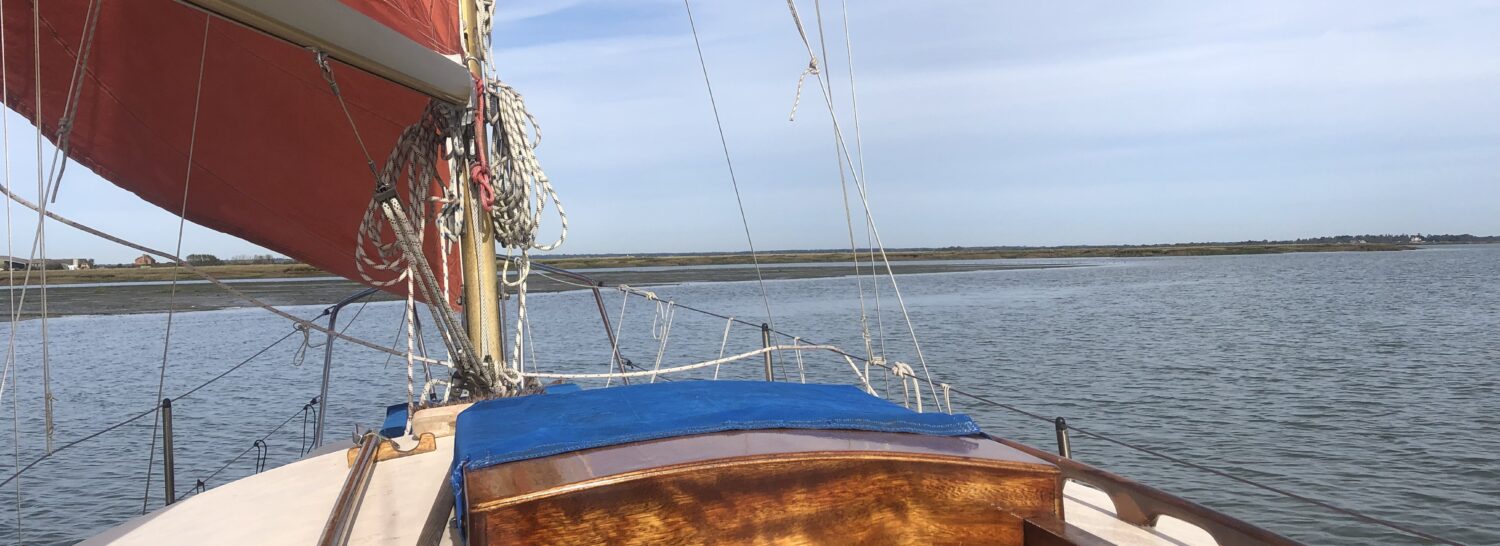The Mate and I have been on a two week heist to the West Coast of Scotland with a Northumbrian stop-over on our way home.
We have had two sessions in the western isles waters aboard the fifty-foot gaff cutter Eda Fransden (One is told about in my recent book: Sailing through life…)
After a distance break in Carlisle, Glasgow was visited for the opportunity to visit the Burrell Collection. Brilliant! From there we were booked to stay with my cousin and his wife in Tarbert, Argyll.
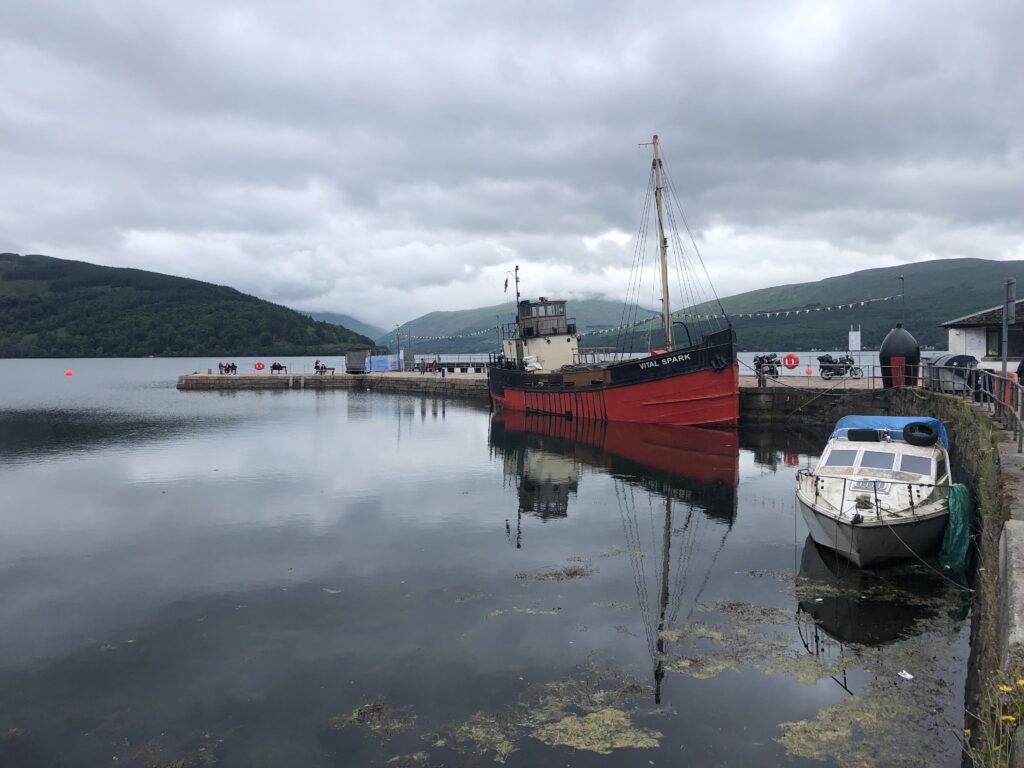
Onwards to Tarbert…
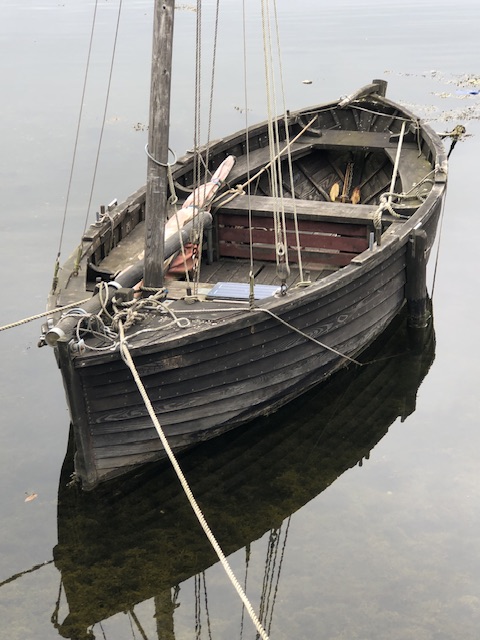
In Tarbert harbour was a small local traditional fishing skiff, rigged with a lug sail – whether dipping or not I couldn’t tell. According to my cousin, the boat does get used and isn’t just for show!
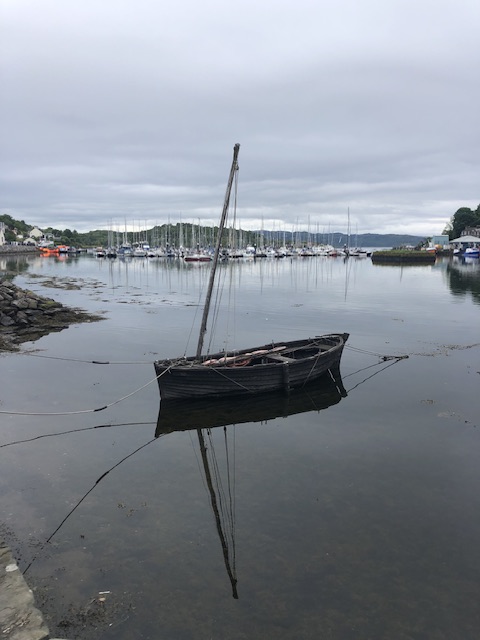
Although the marina looked to be stuffed full of plastic, it wasn’t, and some, as it turned out was classic!
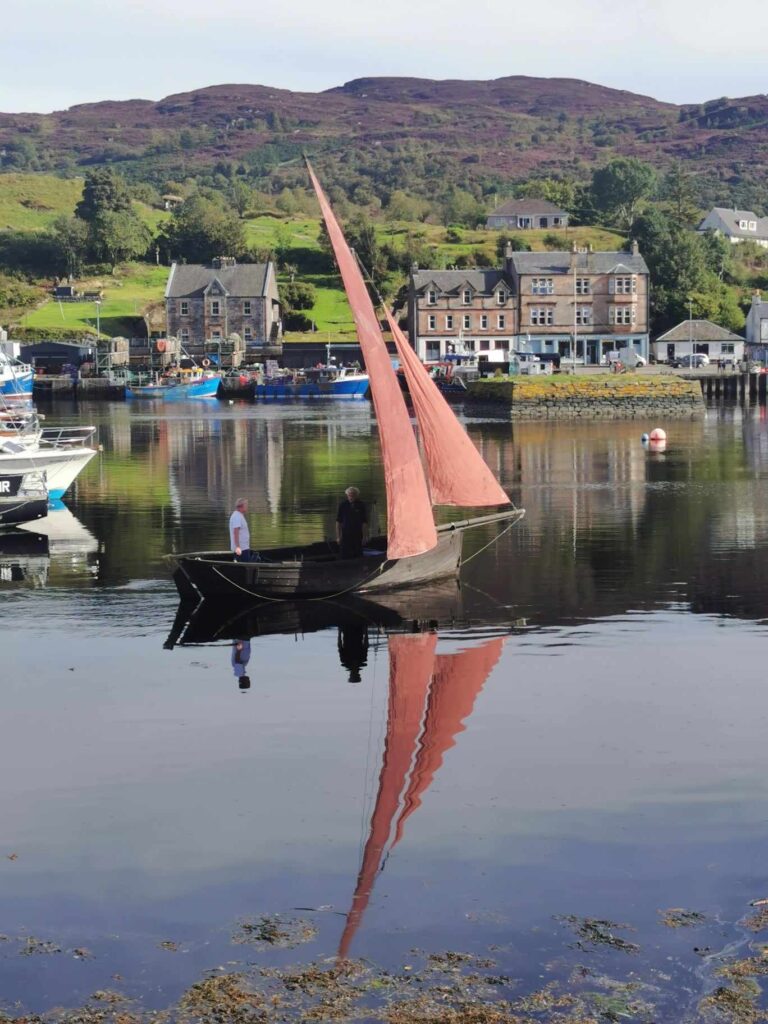
Picture: Jenny Hunt.
Our visit coincided with the Clyde Series Whitsun Bank Holiday Weekend Regatta. Wow, I was suitably impressed by the time we departed…
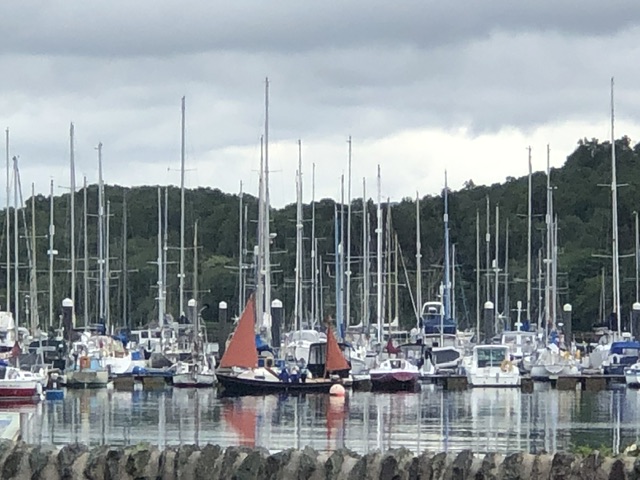
Driving up towards our weekend abode, I spotted this 8 m tacking slowly home after the first day’s racing (Friday). It was clear she had a wooden hull.
Later during our stay, I spotted a modern ‘8’ with a Swiss sail number.

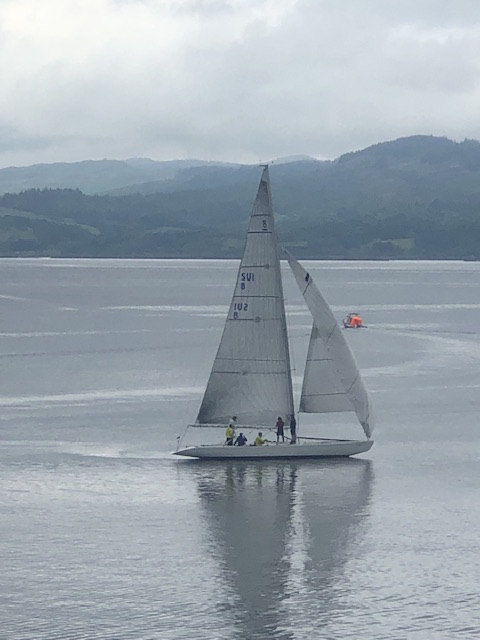
I have emailed the class association to find out details!
There was another wow too: we spotted what looked like miniature yachts heading into the harbour. It turned out that they were self propelled marker buoys and have been in use in ‘international’ regattas for some time.
They are battery powered with two motor driven propellers. They are capable of keeping station and, in the need, to be ‘motored’ to a new position by a controller.
The insertion of a gps position, they will head for home. See one type found online:
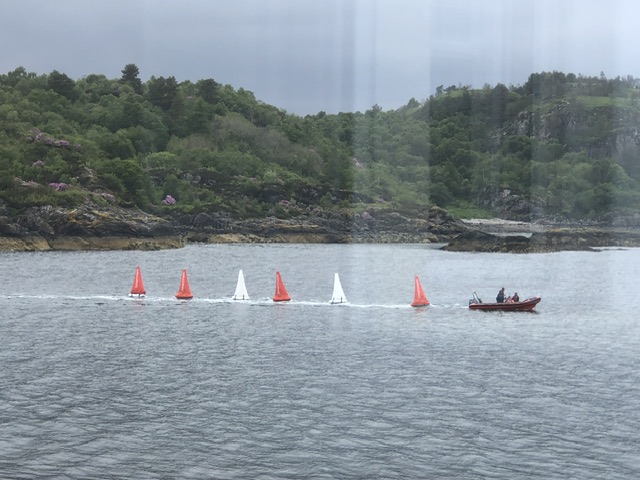
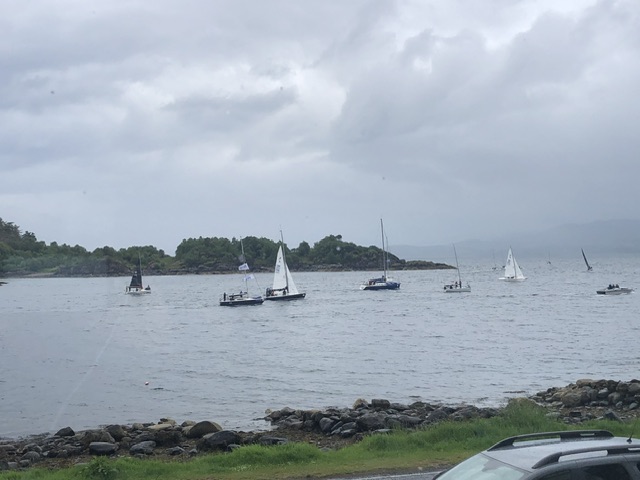
I had been ‘promised’ a sail aboard my cousin’s boat – a big Beneteau of some 35′ in length. Sunday was the day deemed best (it wasn’t in the end, but a good choice!). A walk and a visit to Crinan at the northern entrance to the Crinan Canal was made.
In the canal basin was another Clyde Puffer, VIC 32, dating from 1943. It is privately owned and operated. Close by a sleek motor boat sat with drooping ensign and burgee. Passing it, Christobel spotted that the burgee was familiar. The West Mersea YC!
We had a bit of a chat. The boat had been trucked up to the Clyde and the couple were on a complete summer cruising around. My cousin gave some advice about anchorages…
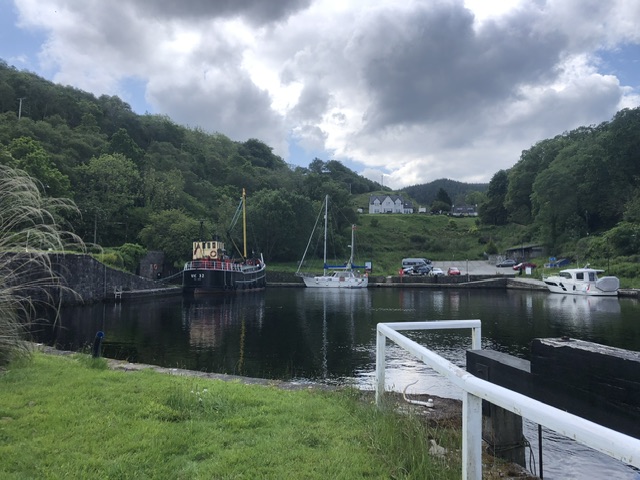
In a neat cafe sitting beside the basin I spotted a range of engines on display – all ready to go…
They were all in fact agricultural engines made by Lister, so could have been used afloat!
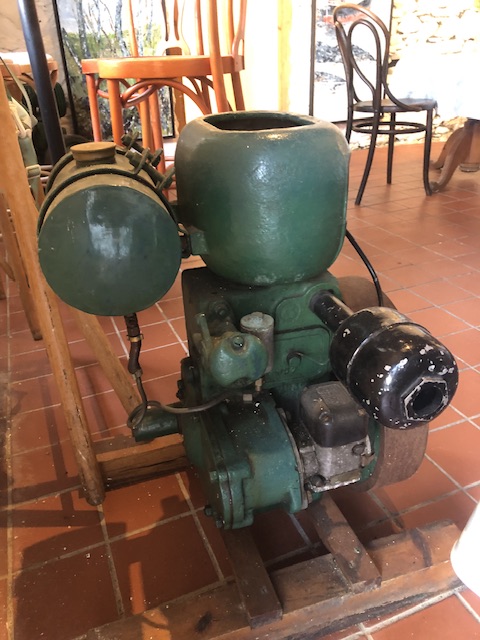
So, to the brilliant bit. We went sailing on the Clyde!
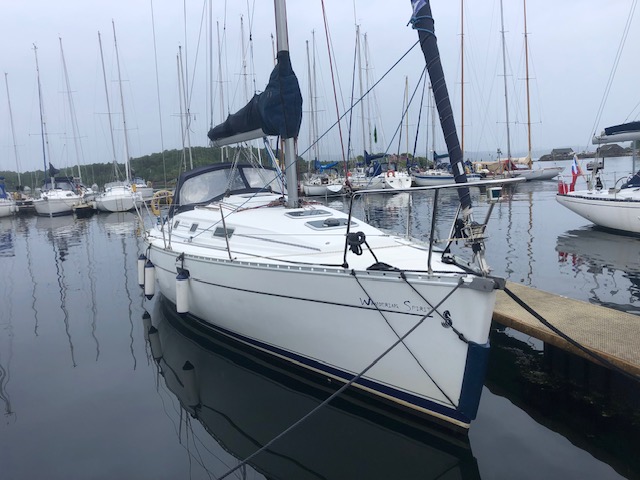
It went from a murk to drizzle then rain…
Clearing the marina we set off down course to meet the craft as they returned. At a point near an island with the Sgat Mor Lighthouse we turned for home. It wasn’t long before the rain really set in – my mate was bravely keeping her chin up, or well covered!
Apart from some winch work when tacking there wasn’t a lot of cockpit activity…

Closing the finish line, the sun tried to reappear as the rain ceased and with it a calm, which was bewitching to the tail-enders struggling to finish.
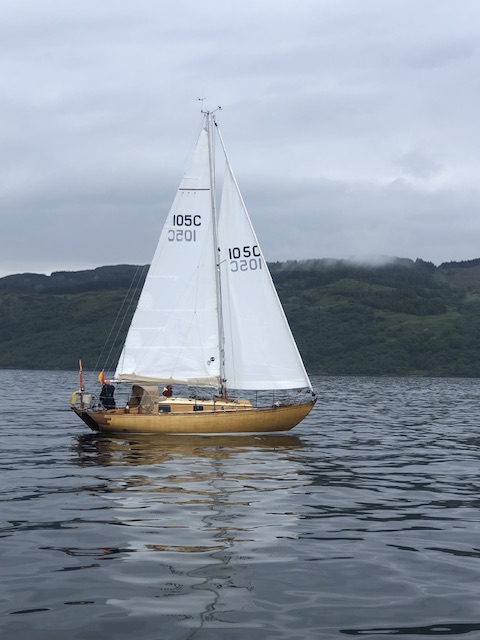
A wooden Mc Gruer 28, of which only eight were built, owned by offspring of my cousin’s neighbours (they having passed her on) was one of these. She’d been timed out in a previous race and had felt aggrieved! They did finish in time…
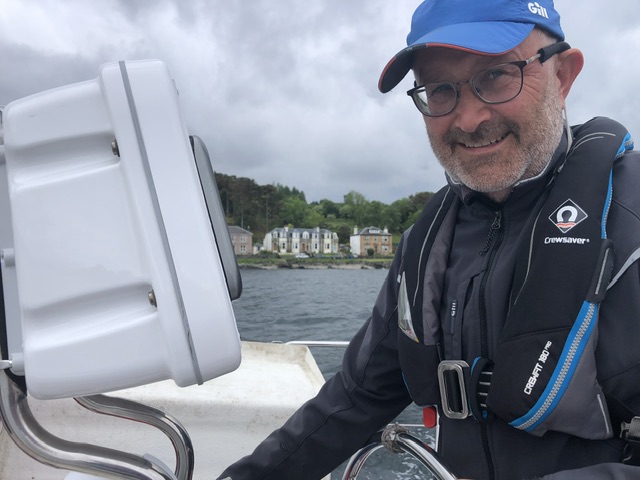
As we went ashore after tidying and stowing gear, as one does, the race markers were collecting at a pontoon. Fascinating, but effective.
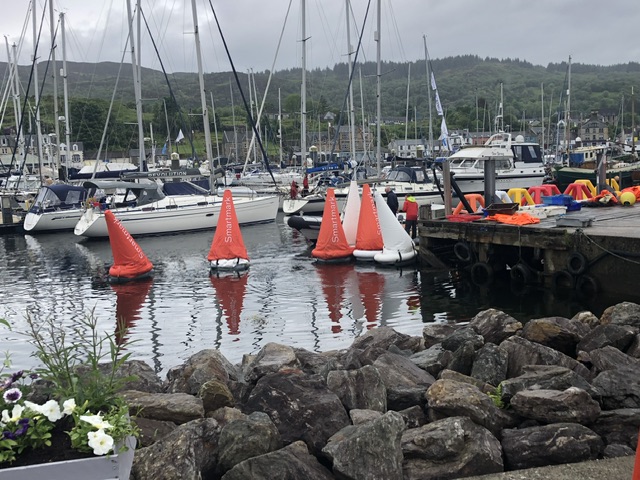
For details of a similar type:
https://www.facebook.com/share/r/YPMnx19jXkN1vWEz/?mibextid=UalRPS
Sadly we had to leave Tarbert to continue our excursions around the coast. Next stop was Ardfern, a lovely little place with a delightful friendly marina. Littered along the loch were patches of swinging moorings.
At the marina, I was hoping to spot a Finesse 21 motorised open boat, called Stravaig. This boat had come from Milfordhaven in Wales after having been sailed as an open boat. Why, is not known. Then, she was called Arab – told about in my book, The Jottings of a Thames Estuary Ditch-crawler.
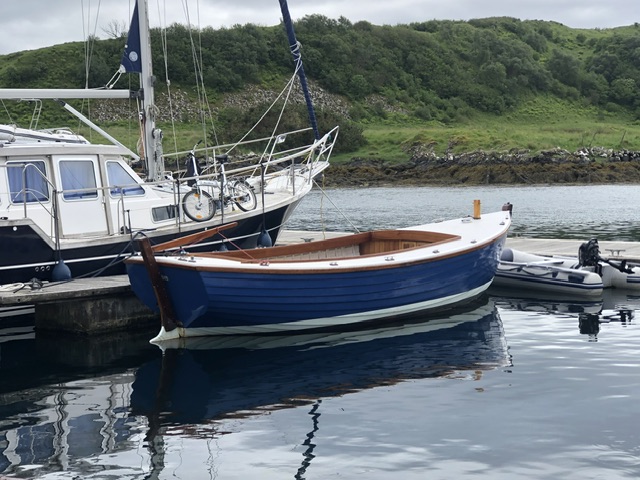
The boat was exceedingly well fitted out. I was though very surprised that a cover wasn’t fitted.
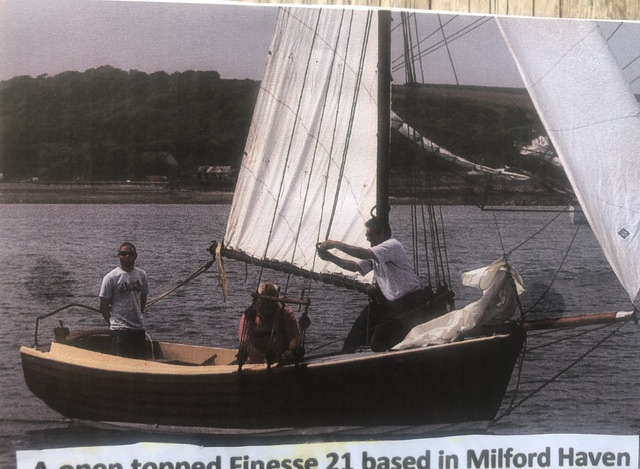
While continuing my travels, my cousin sent me a post seen locally of a Corish lugger sailing into Tarbert’s harbour. The boat was built in 1881…
See post picture for details. Amazing.
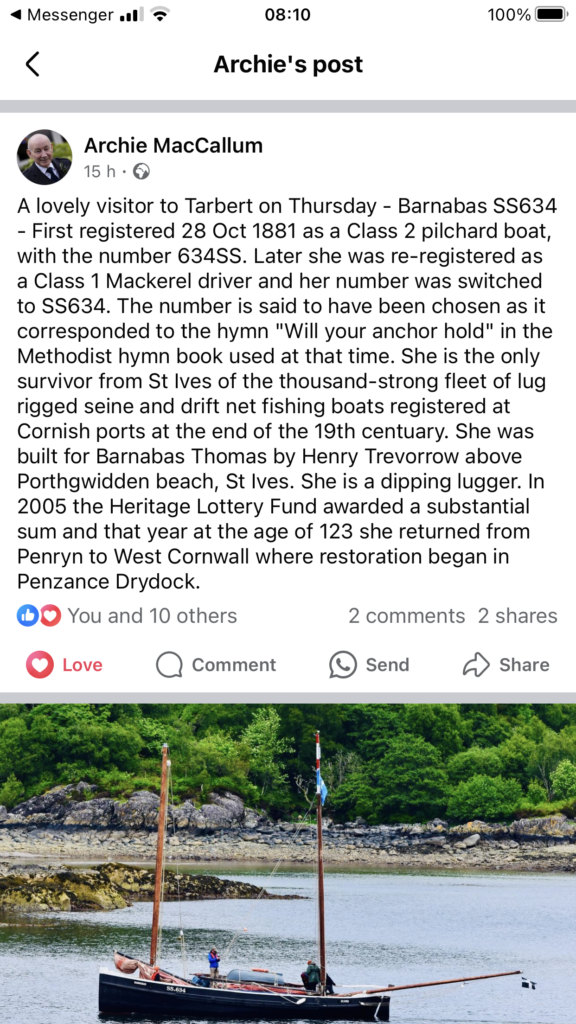
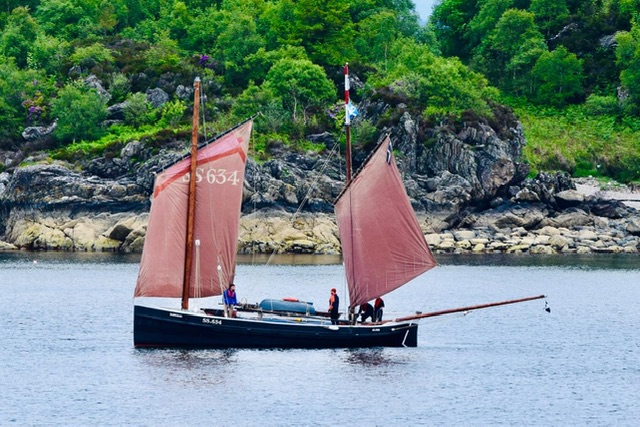
Nearing the end of our journeyings and in Northumbria, we ended up in Amble. Driving towards the town, I spotted masts and was reminded of a little sailing club – The Coquet SC – where a Finesse 24 used to be based.
Contact had been lost. I wondered, indicated and pulled in!
The sight that I spotted as we parked up nearly brought tears to my eyes for a boat that a previous owner had cherished and cossetted was a mess.
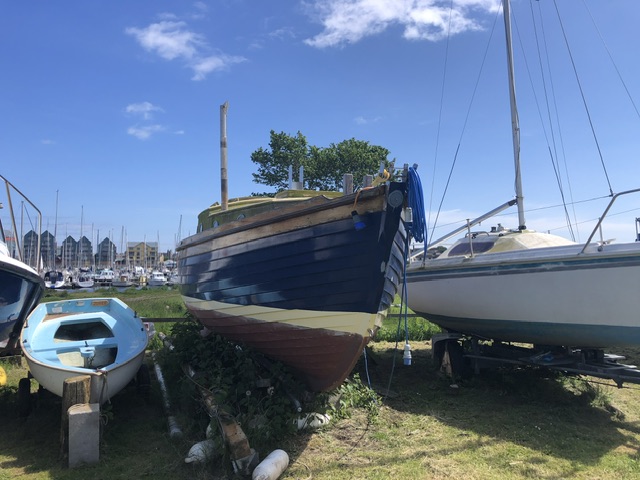
The boat was originally called Emma & Kate. She has teak laid decks and has a fit out above spec. She was built as a gaff cutter and her spars with loose peeling varnish sat beneath the boat.
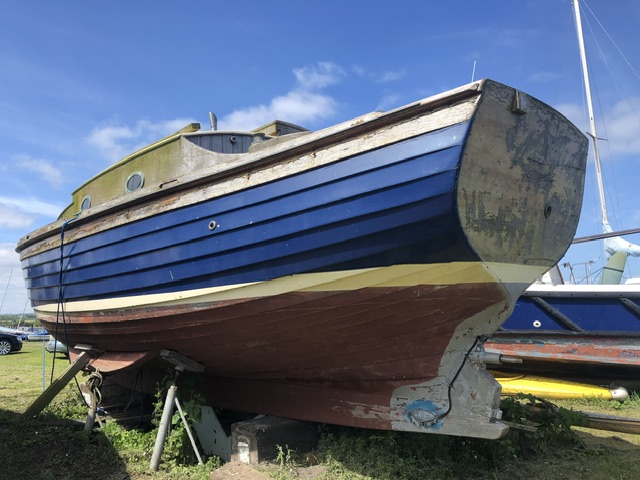
The cockpit has been left uncovered and most of the varnish had failed…
I obtained some details but said would try and contact the club’s secretary again. I left with a feeling of sadness.
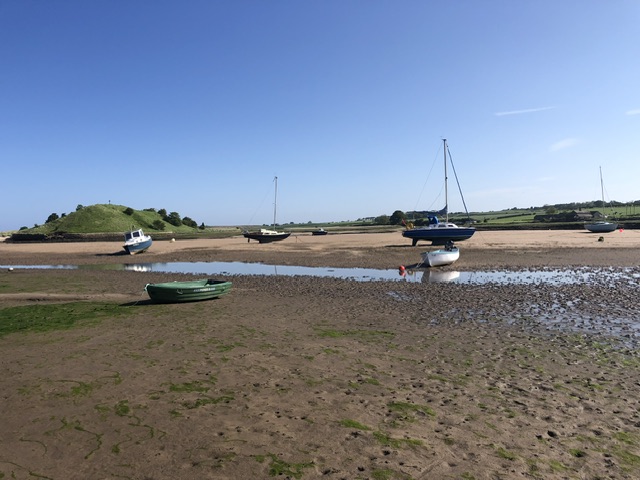
It was a fascinating tour with oh so many boats on a ‘No Boats’ holiday!
